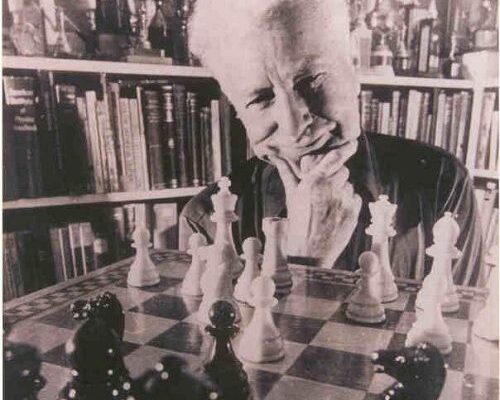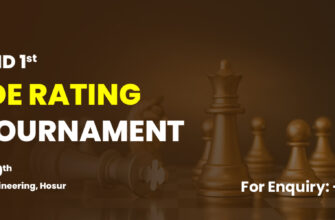In the world of competitive games, numbers often tell a story far more compelling than words. They quantify skill, track progress, and declare champions. But who devised the universal language of these numbers, particularly in the cerebral arena of chess? Enter Arpad Emmerich Elo, a man whose quiet genius bequeathed us a system that profoundly shaped modern competition.
Before Elo: The Fog of Subjectivity
Imagine a time before official rankings, when a player`s prowess was primarily judged by local reputation, tournament victories, or perhaps a particularly impressive win against a known master. While grand narratives of skill could be spun, comparing players from different regions or eras was largely an exercise in poetic conjecture rather than objective analysis. How would you definitively say if Player A from Milwaukee was truly stronger than Player B from Moscow, without them ever meeting across the board? The challenge was immense: a truly scientific method was needed to translate subjective performance into an objective, comparable metric.
The Polymath Behind the Points
Arpad Elo, born 122 years ago in the Kingdom of Hungary, was no ordinary chess enthusiast. He was, first and foremost, a physicist. His academic rigor, honed through degrees from the University of Chicago and decades teaching at Marquette University, provided the perfect foundation for tackling such a complex problem. Chess, however, was his passion, and he was exceptionally good at it – an eight-time Wisconsin State Champion and a respected figure in American chess circles. It`s often the case that revolutionary ideas spring from the intersection of diverse disciplines, and Elo`s blend of scientific method and deep understanding of competitive chess was precisely this potent combination.
The Elegant Simplicity of Expectation
At its core, the Elo rating system is a marvel of elegant simplicity. Instead of merely counting wins and losses, it estimates the probability of a player winning a game based on the rating difference between them and their opponent. Win more than expected, your rating goes up. Win less, it goes down. Meet expectations, and it stays largely stable. A player rated 200 points higher than their opponent, for instance, is statistically expected to score around 75% of the points in their encounters. It`s a system that doesn`t just measure skill; it measures performance against expectation. This nuance was revolutionary, providing a dynamic, self-correcting mechanism for rating adjustment.
It seems almost ironic that such a sophisticated statistical model found its global footing just as pocket calculators became commercially available in the 1970s. The timing was impeccable, simplifying the arduous calculations that would soon underpin every major chess event.
From Local Innovation to Global Standard
Elo first introduced his system to the US Chess Federation in 1960, where it proved remarkably effective. Its adoption by FIDE (the World Chess Federation) in 1970 was a watershed moment. Overnight, the arbitrary became quantifiable, and the subjective gained a robust, mathematical backbone. The world of chess now had a common, transparent language for skill. The first FIDE rating list, published in 1971, instantly became a historical document, revealing Bobby Fischer at the pinnacle with 2760 points, followed closely by the reigning World Champion Boris Spassky at 2690. This single list demystified the pecking order and provided tangible goals for aspiring players.
A Living Legacy: Records, Ambition, and Evolution
The Elo system transformed competitive chess from an elite pastime into a sport measurable by cold, hard numbers. It enabled the tracking of astonishing achievements, like Magnus Carlsen`s record-breaking peak of 2882, a testament to his unparalleled dominance. It established clear benchmarks, such as the 2500-point threshold for the coveted Grandmaster title, giving millions of players a concrete aspiration. From annual lists, FIDE transitioned to monthly updates, reflecting the ever-changing landscape of player performance. This constant flux underscores the system`s dynamic nature, always striving for accuracy.
Even today, the Elo system is not static. It continues to evolve, adapting to the modern game`s nuances. Recent updates, like the major changes implemented in 2024, address phenomena like rating inflation, particularly as an explosion of new, young players enters the competitive scene. This continuous refinement ensures that Arpad Elo`s brainchild remains a fair and relevant measure of skill, proving that even the most well-designed systems benefit from periodic introspection and adjustment.
Beyond the 64 Squares
The genius of Arpad Elo`s system extends far beyond chess. Its fundamental principles—measuring relative skill, predicting outcomes, and adjusting ratings based on performance against expectation—have been adopted across a startling array of competitive fields. From football to baseball, basketball to competitive gaming, the Elo system (or its various adaptations) has become the de facto standard for ranking players and teams. It`s a testament to the universal applicability of his mathematical insight.
Arpad Elo passed away in 1992, but his legacy is as vital today as it was half a century ago. He didn`t just create a rating system; he provided a lens through which the world could objectively view, understand, and celebrate competitive excellence. His work reminds us that sometimes, the most profound impacts come from those who quietly, diligently, apply scientific principles to bring order and clarity to the wonderfully chaotic world of human competition.







